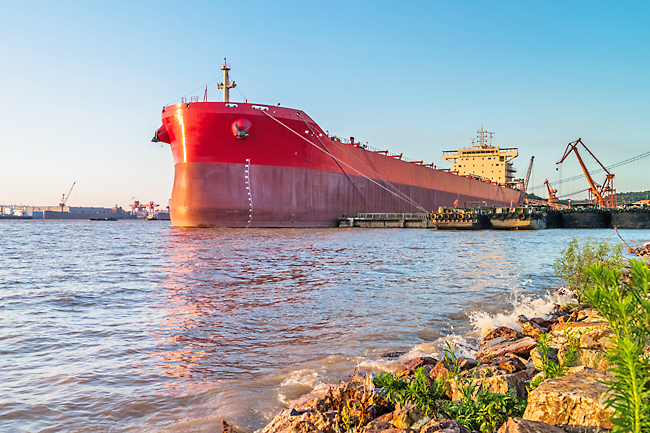Aqilah Rahman
Global seaborne trade has grown immensely in the last 25 years, now accounting for about 80 per cent of the annual total volume of global trade. With the growth of international shipping, the industry has become a major source of greenhouse gases, contributing to about 20 per cent of global emissions from transportation, according to a report by RTI International.
Titled Act Now or Pay Later, the report highlights that effects of climate change put the shipping infrastructure and operations at risk due to increasing sea levels, storms and inland flooding. Globally, the average annual storm damage to port is approximately USD3 billion.
The report noted that damages to port infrastructure could reach nearly USD18 billion by 2100, while storm-related port disruptions could add another USD7.5 billion each year.
In total, the future additional costs due to climate change would be almost equal to the container port sector’s total annual net earnings in 2019 which amounted to USD25 billion.
Given that ports play a major role in global supply chain networks, it is important that port operations run smoothly to ensure a smooth flow of the supply chain. Disruption in port operations in one location can affect other ports and the rest of the global supply chain.
The ports and maritime shipping networks are highly vulnerable to supply chain disruptions, as shown by the six-day blockage of the Suez Canal due to the Ever Given vessel which significantly disrupted the global maritime trade.


As climate change continues to accelerate, global sea levels are expected to rise and storms are expected to intensify. This will damage port infrastructure, disrupt port operations and cause incidents at sea.
According to the report, at least one-fifth of vessel losses from 2015 to 2019 were related to weather conditions. Many of the incidents took place in the South China, Indochina, Indonesia, and Philippines maritime region, partly due to its high levels of traffic and bad weather compared to other regions.
During storms, ships will have to adapt by re-routing which can lead to delays and increase in operating costs, depending on the containership and amount of fuel consumed. A containership which consumes 150 tonnes of fuel per day could cost about USD75,000 for each additional day at sea.
The report cited a recent analysis of port disruptions due to tropical cyclones from 2011 to 2019 which evaluated 141 incidents across 74 ports in 12 countries. The analysis found a median disruption of six days, and almost half of the incidents led to complete shutdown of port operations.
In addition to storms, flooding and drought can also indirectly impact the maritime sector through supply chain effects. Extreme heat can damage shipping vessels and port infrastructure, inflicting stress on cooling systems and metal port structures such as cranes and warehouses.
Also discussed in the report is the estimated cost of preventing port damage and disruptions, focussing on port elevation as the adaptation approach, which typically involves raising the port surfaces and infrastructure using fill materials and reconstructing facilities at a higher level.
Elevating all ports to protect against the rising sea level and store surge is projected to require an investment of up to USD176 billion by 2050. For 2100 projections, the costs are estimated to reach up to USD205 billion.
Assuming an 80-year lifespan and three per cent discount rate, this is equivalent to USD4 – 6.8 billion per year. For comparison, the report uses the Port of Los Angeles (California) with an area of 17.4km2 as an example, for which the adaptations costs would be equivalent to 31-44 per cent of the port’s net available revenue in 2020.
The report concluded that climate change is likely to cost billions in additional costs each year without the appropriate countermeasures. In addition, the actual cost is likely to be higher than estimated if future growth of the port industry and global trade volume is taken into account, along with cost estimates for “soft” adaptation measures such as port defence or re-routing.
The report highlights several steps the industry can take to transition to green shipping and reduce the impact of climate change, such as full decarbonisation by 2050 in line with the Paris Agreement as well as investing in zero-emission fuels and technology.
A number of leaders from the shipping industry have endorsed a Call to Action through the Getting to Zero Coalition, which aims for commercially viable deep sea zero-emission vessels by 2030.


